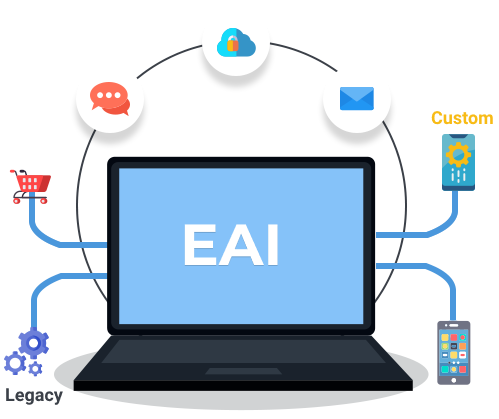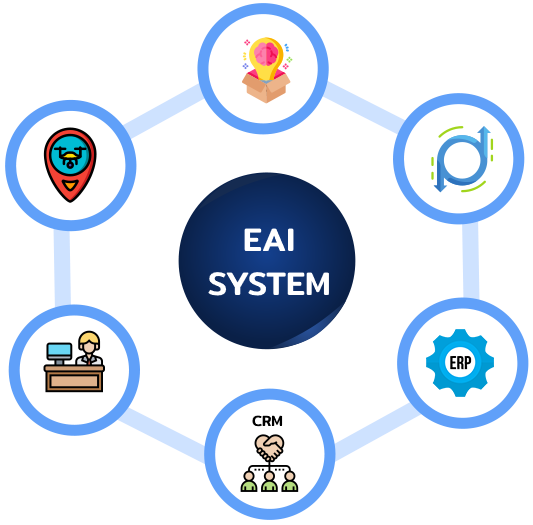What is Enterprise Application Integration?
Information silos and legacy applications can be problems for enterprise-level organizations looking to have transparency and utilize all their application data across the entire organization.
Unfortunately, integration of siloed data and associated applications cannot be achieved with an off-the-shelf solution. Custom development is required to achieve integration that positively impacts your productivity.
To harness the power of application integration, you need a team on your side that understands how to integrate high-level workflow applications. For example, AECCloud’s software development team has expertise in solutions such as Microsoft BizTalk (middleware), and Confluence Kafka. By using small software programs to bridge between existing applications and implementing more modern applications, our IT specialists help you avoid the pitfalls common to siloed departments using legacy applications and databases.
The advantages of Enterprise Application Integration are many.
- Improved Processes
- Data Sharing
- Smoother Workflows
- Workflow Automation
- Lower Overhead
- Higher Collaboration Rates
- Greater Efficiency
When existing enterprise applications are given better avenues of data sharing and communication, it results in the removal of roadblocks and headaches for employees and a more robust bottom line.
What Types of Issues Does Enterprise Application Integration Solve?
In a recent client engagement, the AECCloud IT specialists enabled a corporation’s Project Management software to utilize the same data as their Accounting software. This allowed them to input data only once, saving them both time and money. We accomplished this integration using Middleware BizTalk, developing adapters for each of these programs and orchestrating the integration process flow by creating apps within BizTalk.
In another client project, we have used Kafka to accomplish similar pro-growth results based on agile process/methodology.
What Does Enterprise Application Integration Achieve?
When business data is appropriately transmitted, stored, utilized, and reflected by each application within the system, data transparency is achieved, better management decisions are made, and internal processes become more effective. Siloed data and applications become a thing of the past as data can now be aggregated, categorized, and visualized. But analytics and efficiency aren’t the only reasons for Enterprise Application Integration. Companies that leverage this high-impact technology acquire the ability to more easily enforce data policies, cybersecurity protocols, and compliance rules across the entire organization.
Although Enterprise Application Integration is comprised of complex technologies the end result is an easier, more effective workflow for you and your employees.
Two Types of Enterprise Application Integration
While streamlined efficiency is the result of Enterprise Application Integration, there are generally two ways to go about achieving this goal.
Mediation
In this case, the software that we implement behaves as a “mediator” between software and hardware assets that formerly did not communicate or communicate well.
Federation
In this case, the software that we implement pushes external data to disparate software and hardware assets, guaranteeing that those assets receive the right data in the most efficient format for their function.
The AECCloud Enterprise Application
Integration Process
When an Architectural, Engineering, or Construction firm partners with the IT specialists of AECCloud to provide Enterprise Application Integration services, a process is kickstarted that results in a better working environment for their business. These are the steps that we undertake in providing this higher level of IT efficiency for your organization.
1
Assessment
In speaking with your leadership team and any other relevant stakeholders, we are able to identify not only the pain points brought on by siloed data but are also able to discover lower-grade IT headaches that hamper your efficiency and lower productivity.
2
Roadmap Creation
Enterprise Application Integration is usually a step-by-step process. Because of this methodical approach, an application integration roadmap must be created to ensure that nothing is missed.
3
Implementation
Putting the roadmap into actionable steps and taking each of those steps methodically while ensuring data preservation and security is all within the implementation stage. Each phase of implementation is undertaken with your goals and the impact on your internal processes in mind.


